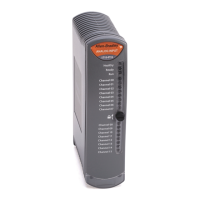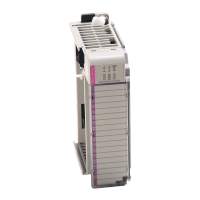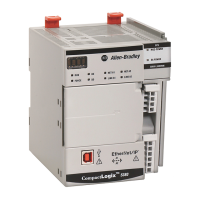138 Rockwell Automation Publication 1715-UM001J-EN-P - December 2020
Chapter 5 Using 1715 Analog I/O Module Features
because, while the module is being removed or inserted, there is no additional
disruption to the rest of the controlled process.
Module Fault Reporting
The 1715 analog I/O modules provide hardware and software indication when a
module fault has occurred. Each module has a status fault indicator and
the Logix Designer application graphically displays this fault and include a
fault message describing the nature of the fault. This feature lets you
determine how your module has been affected and what action must be taken
to resume normal operation.
Fully Software Configurable
The Logix Designer application uses a custom, easily understood interface to
write configuration. All module features are enabled or disabled through the I/
O configuration portion of the software.
You can also use the software to interrogate any module in the system to
retrieve:
•Vendor
•Product Type
• Product Code
•Revision
• Serial Number
• Product Name
By eliminating such tasks as setting hardware switches and jumpers, the
software makes module configuration easier and more reliable.
The keying options available with your 1715 analog I/O are outlined in
Chapter 2
.
Status Indicator Information
Each 1715 analog I/O module has status indicators on the front of the module
that allow you to check the module health and operational status of a module.
Module Inhibiting
Module inhibiting lets you indefinitely suspend a connection between an
owner-controller and an analog I/O module. This process can occur in either of
these ways:
• You write configuration for an I/O module but inhibit the module to
prevent it from communicating with the owner-controller. In this case,
the owner does not establish a connection and configuration is not sent
to the module until the connection is uninhibited.

